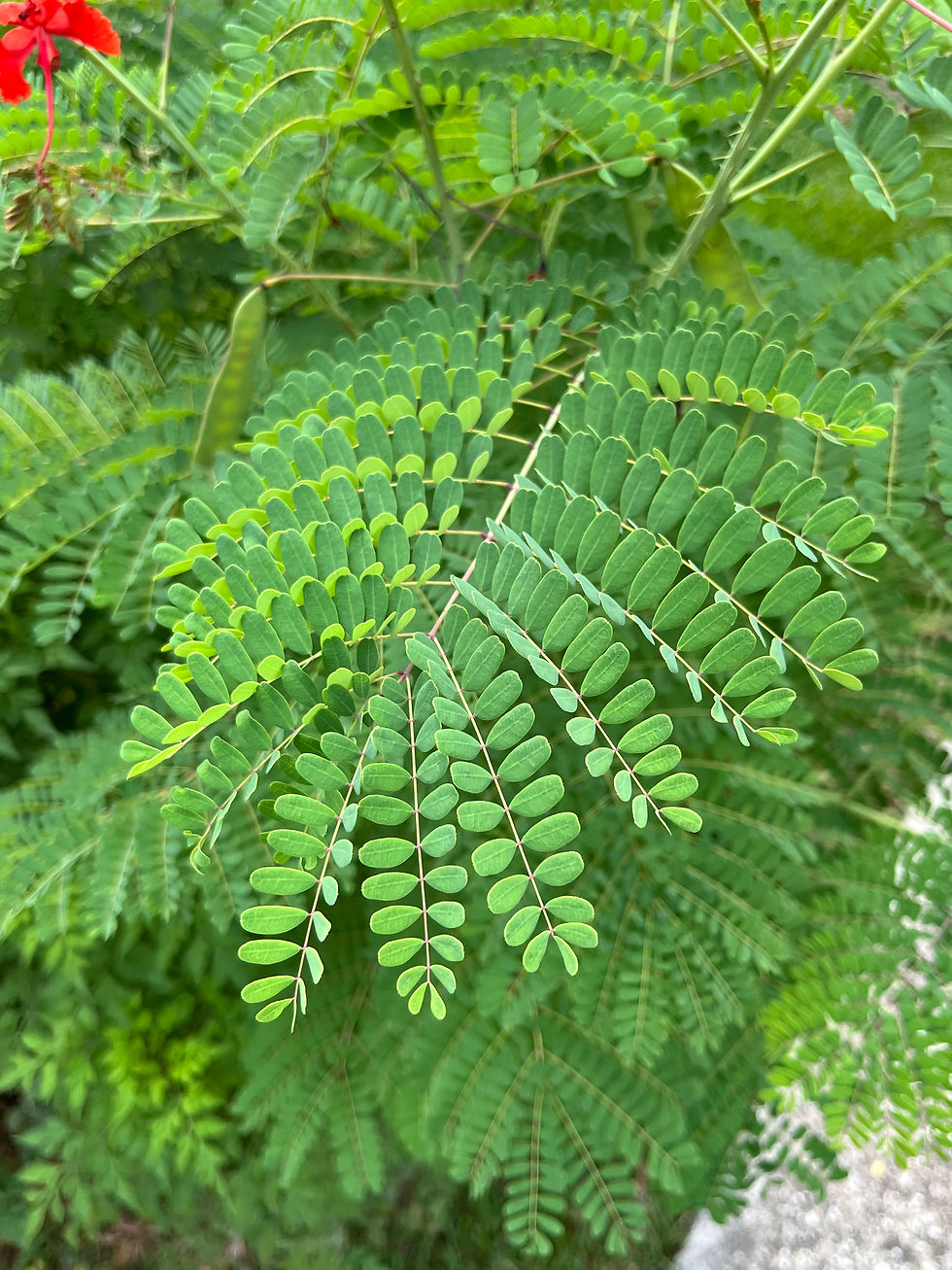Ask a Master Gardener: A New Plant for the Mobile Area
- Jennifer McDonald
- Aug 18
- 3 min read

By: Alice Marty, Mobile County Master Gardener, www.mobilecountymastergardeners.org
Master Gardeners are frequently interested in growing a new plant species. When a friend asked if I was interested in seeds from a new plant having the most beautiful flowers she had ever seen, I couldn’t resist. While she did not know the name of the plant, she had talked with the Midtown owner who called the plant a Peacock tree and shared some seeds with her. It was originally a gift from the woman’s neighbor who brought a scraggly little seedling home from New Braunfels, Texas, several years ago.
New Braunfels is in USDA Hardiness Zone 9a, the same as Midtown Mobile. The plant freezes to the ground some winters, but the owner trims the old stalks off in the spring, and it regrows and blooms by summer.
Recently, I got the opportunity to see the plant in bloom. I instantly recognized it as a plant I had seen at the Los Angeles Botanical Gardens. I will have to admit, when seeing the plant in California, I thought that it had the most beautiful flowers I had ever seen. Looking up the name, I found it to be Caesalpinia pulcherrima. This plant is commonly known as Bird of Paradise, Pride of Barbados, Mexican Bird of Paradise, Dwarf Poinciana, Peacock tree, and many others.
Since there is only one Caesalpinia pulcherrima that we know of growing in Mobile, I assumed it must be difficult to grow here. I did some research before I planted the seeds hoping they would germinate.
Caesalpinia pulcherrima has ruffled blossoms that are red turning to orange with a yellow edge. The long red stamens extend out of the blossom. The Midtown plant is bushy, shrublike, and about 5’ tall and 4-5’ wide. The leaves are bipinnate and resemble ferns. The shrub would be attractive even without flowers.
Caesalpinia pulcherrima benefits from pruning and can be shaped to tree form or a shrubby bush form typically 5-8’ tall. The plant will grow that large even after freezing to the ground the previous winter. The blooms occur on new growth. The Caesalpinia pulcherrima is a deciduous shrub in zone 9 and perennial in zone 8. In climates where frost occurs, the flowers appear in late summer and fall.
The seeds look like brown lima beans found in 3-to-6-inch pods that burst open and self-seed. Most plants are started with seeds, although cuttings can also be propagated. Caesalpinia is a member of the Fabaceae or pea family. They are legumes that generate their own nitrogen. Plants in this family are considered easy to grow, heat tolerant, and thrive in sunny, well-drained soil.
If you fertilize, try to use a low nitrogen variety. Allow the plant to dry slightly before watering to prevent root rot. Do not overwater! It is native to dry areas yet considered a tropical plant. In the U.S. it grows well in Florida, Texas, Arizona and California. They need 6 to 8 hours of sun to bloom well.
Caesalpinia pulcherrima, Caesalpinia Mexicana, and Caesalpinia gillesii are three varieties that are best known. Caesalpinia pulcherrima, our Midtown plant, has red blossoms, but a hybrid variety is on the market now with yellow blooms. Caesalpinia Mexicana is commonly confused with Caesalpinia gillesii because they both have yellow blossoms. The Mexicana variety has yellow stamens. Caesalpinia gillesii has yellow blossoms with exceptionally long red stamens.
The growing and care of the plant varieties doesn’t seem difficult. All species have similar growing needs and typically bloom in summer, or year-round in tropical regions. They should all be root hardy in Mobile zone 9a’s winter temperatures.
My seed planting strategy: After soaking the seeds overnight, they were planted in a container of potting soil, lightly covered with soil and set in the sun. One seed emerged in 3 days, but the others took their time. I repotted them separately in well-draining potting soil and placed them in the sun. One will be planted in the yard in a sunny area before winter comes. Another will go into a large pot outdoors. The others will go into the garage when freezing temperatures are forecast.
I am not expecting any blooms this year and maybe not even next year, but it would be a wonderful surprise. When it blooms, I will share the news and photos!





Comments